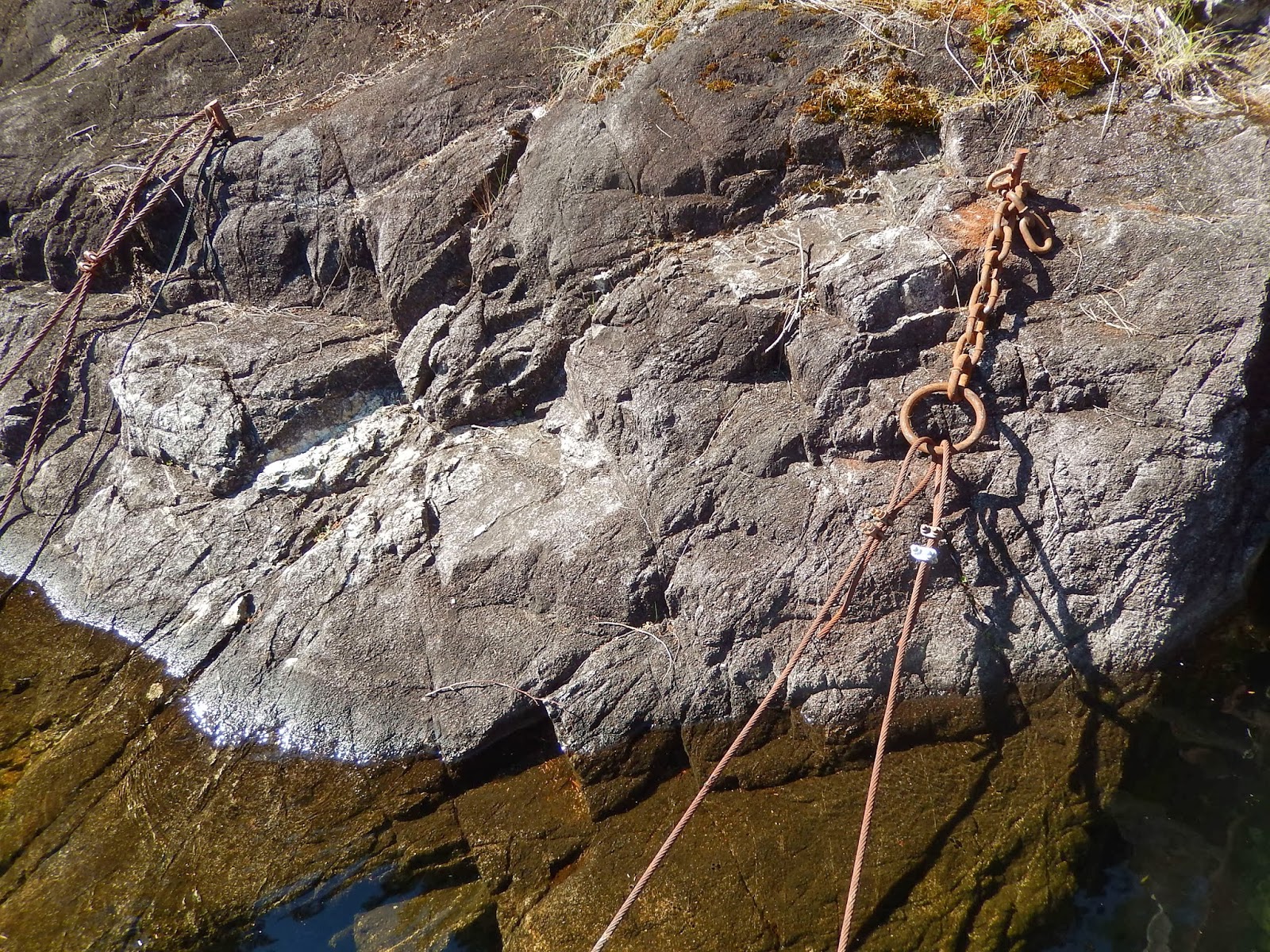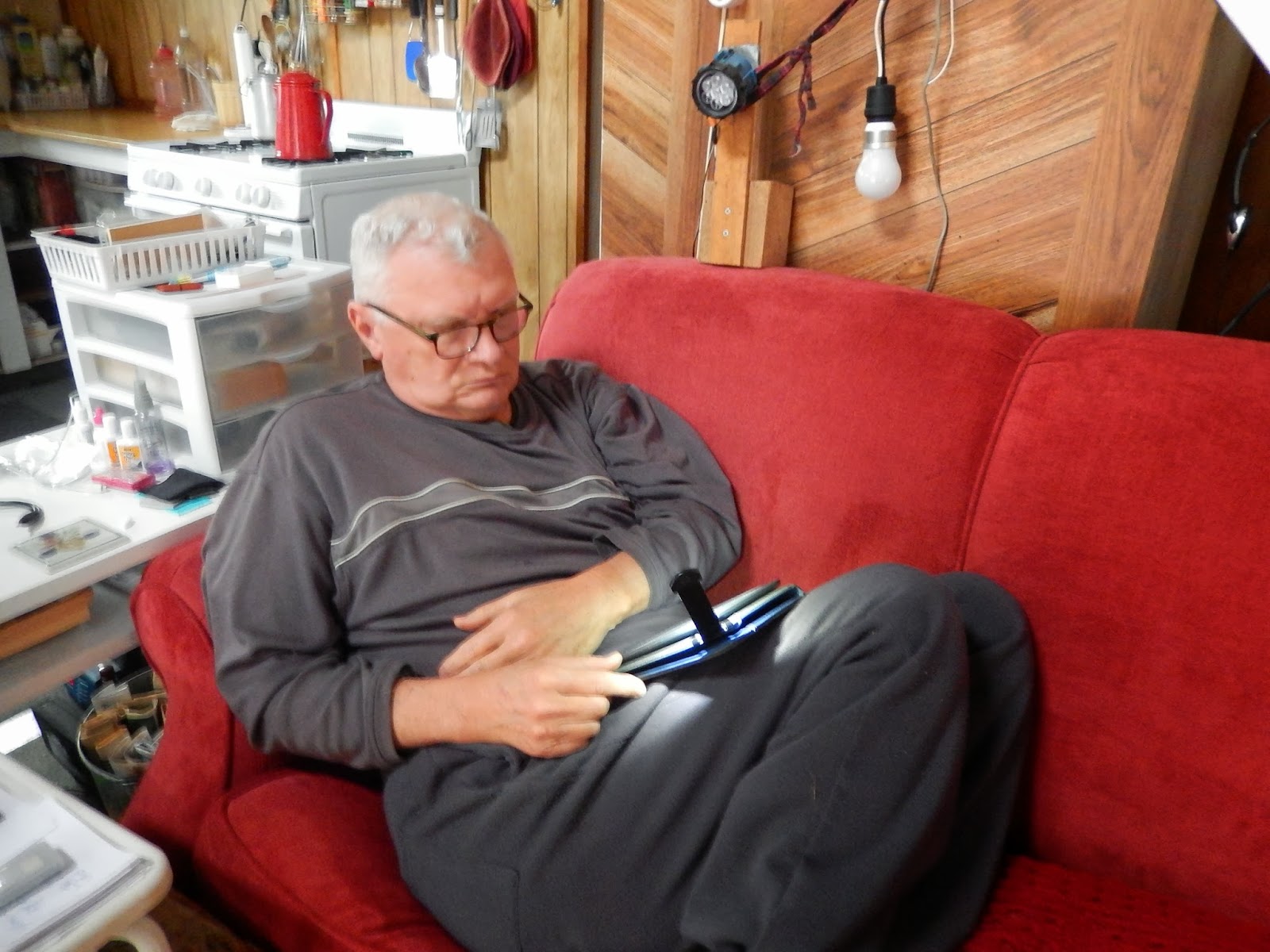Last week I shared a post about our dear cat Stick Tail. I didn't have the heart to delete it. You see, Stick passed away on Saturday, January 11. If you follow my blog, you know that Stick has been with us for a long time. We celebrated his 23rd birthday on January 1. Since he came to us as a stray, we picked that for his special day.
 |
| Stick on the stairs in his float cabin home. |
Stick wandered into our life and hearts (through an open kitty door) in 1991. He was bedraggled and had a shortened tail, most likely due to an encounter with a coyote. We invited him to stay. A visit to the vet gave him a checkup, shots, and a tail bob to fix the damage. His shaved tail earned him the lifetime moniker of Stick Tail.
 |
| David in Pomona with his kitty Jet. |
Stick first lived with us in a cityfolk condo in Los Angeles. We tried to curb his outdoor ways, but old habits die hard. After Wayne and I retired in 2005, we moved north to our float cabin on Powell Lake. During that time, Stick had a live-in friend and kitty sitter, David. It gave David a nice place to live, and Stick a wonderful companion.
 |
| Constant companions. |
In 2008, we sold our Los Angeles condo and moved Stick north to Bellingham to be closer to us, and to be a companion for my mom. We weren't sure if she would take to Stick, but it was a match made in heaven. Stick kept her company while Wayne and I were at the cabin. In 2010, when she became paralyzed, he became a constant source of comfort and cheer. Every night he would get into bed and wait for her to arrive. When Mom passed away at home in 2013, Stick was right there with her.
 |
| Jeanne with Mom in Bellingham. |
For the last nine months, Stick has been a frequent traveler, back and forth between Bellingham and Powell Lake. We think he even learned to enjoy the car, truck, boat, and sometimes airline trips. Like Mom always said, "It's just important to be together." And we were, almost 24/7 for those last months. When we had to be away, our (and his) good friend Jeanne would keep him company and keep his food bar stocked.
 |
| Mom and Stick in Bellingham. |
Our greatest fear was that Stick would go before Mom. But as Mom's caregiver Bonita said, his job wasn't yet done. But at the ripe old age of 23, cancer came to take it's toll. The only option was surgery and chemotherapy. Wayne and I couldn't let him end his life in suffering, even though we suffered through the decision. We will be gathering his ashes and taking him home to his float cabin.
 |
| The food bar. |
Of all his homes, we think he loved the float cabin the best. He would go up and down the loft stairs twenty times a day (and night) to check out his well stocked food bar. His upstairs sleeping pillow was covered with one of Mom's handmade afghans. Stick loved to go out on the deck and nibble green grass that grew on a cedar log out back. He would lie on the warm cedar planks, or sit between us on the sofa before a roaring woodstove fire.
 |
| Stick at his float cabin home |
Stick will be long remembered. There will never be another like Kitty Cat (as Mom called him) like him. So, good-bye Stick, sleep tight, we'll miss you, job well done. --
Wayne and Margy


 This trip was to exercise the plane and for us to get recurrent. Are you looking for interesting places to fly? Check out Wayne's new book, Flying the Pacific Northwest. There's lots of other suggestions for interesting destinations. -- Margy
This trip was to exercise the plane and for us to get recurrent. Are you looking for interesting places to fly? Check out Wayne's new book, Flying the Pacific Northwest. There's lots of other suggestions for interesting destinations. -- Margy















































